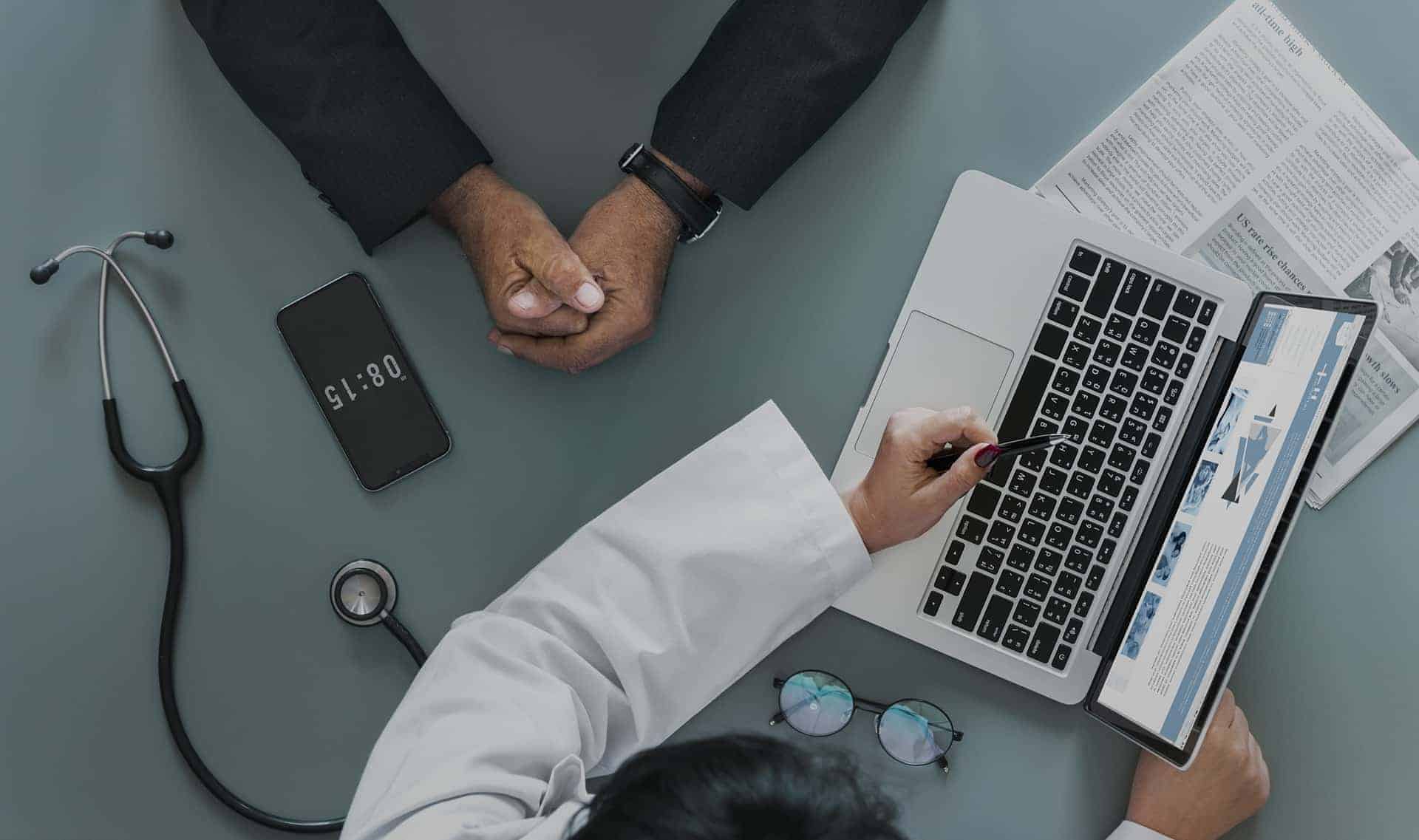optimize. (verb) make the best or most effective use of (a situation, opportunity, or resource)
Digitization promises to make medical care easier and more efficient. But most doctors don’t experience it that way. In the modern exam room – where screens are now as common as stethoscopes – how can physicians optimize interactions with patients?
Doctors widely agree that electronic health records (EHRs) can complicate clinical encounters. A team of Rhode Island researchers conducted a Health IT Survey that asked 2,236 physicians the open-ended question: “How does using an EHR affect your interaction with patients?”
The most common response was that EHRs mean less time with patients because more time is required for documentation. The second most common theme? EHRs reduce the quality of patient-physician interactions.
The task for health systems and practitioners is to make the best of the situation by maximizing effective use of EHRs while maintaining the integrity of patient-provider interactions.
As one office-based physician wrote, it’s “Like having someone at the dinner table texting rather than paying attention.” Other studies have found mixed results, but many agree that interrupted speech and reduced eye contact are common symptoms of doctors using EHRs on a computer.
While many will continue to bemoan the challenges of digitization, EHRs are here to stay. The task for health systems and practitioners is to make the best of the situation by maximizing effective use of EHRs while maintaining the integrity of patient-provider interactions.
Here are five guidelines for optimizing patient encounters in spite of EHRs.
1. Manage physician workload
Perhaps the simplest way to enhance physicians’ time with patients is to strategically take work and stress away from providers. The #1 response from physicians is that EHRs mean less time with patients because more time is required for documentation. In fact, family doctors spend on average 86 minutes of nightly “pajama time’” tethered to their EHRs, according to a recent study published in the Annals of Family Medicine.
Optimizing patient encounters means allocating appropriate documentation tasks to other team members so physicians don’t feel as rushed. Small medical practices can also streamline clinical workflow, ensuring that confirmation calls, quality reporting, coding, scheduling, billing and collections are handled as efficiently as possible.
2. Maintain eye contact
Consistent eye contact tells a patient you’re engaged while conveying a sense of reassurance and support. However, because EHRs require looking at a screen – big surprise here – they affect doctor-patient gaze differently than paper. Physicians should occasionally look up to make eye contact with patients, especially when discussing sensitive information.
“Concurrent computer use may inhibit authentic engagement, and multitasking clinicians may miss openings for deeper connection with their patients.”
3. Share the screen with patients
Beyond eye contact, computer use in the exam room changes many aspects of patient-provider communication. As one study summarized, “concurrent computer use may inhibit authentic engagement, and multitasking clinicians may miss openings for deeper connection with their patients.”
One option for providers taking notes in the EHR is to engage patients in the process. Patients need to feel like you have their full attention. Don’t underestimate the value of simple gestures like facing the screen in the patient’s direction and explaining what you’re doing.
4. Count to 30 before interrupting
Eliciting patient concerns and listening carefully to them contributes to patient-centered care. But according to a recent study, only a third of clinicians ask patients to explain why they’re visiting. Those who do ask interrupt after about 11 seconds. To optimize the patient experience, try counting to 30 before taking over the conversation.
5. Go mobile
Switching to a smaller screen may seem like a half-hearted response to the challenges of EHRs. However, physicians are discovering that embracing mHealth can maximize time with patients.
As a provider using Mobius Clinic’s mobile dictation software explains, “I use my smartphone to dictate the history, physical exam and my plan in front of the patient, because I can pause and ask them, ‘Is there anything I should have added or emphasized?’ They like to hear that I can dictate everything, and for me it’s a matter of convenience that it’s all documented.” By connecting the EHR to your mobile device, software like Mobius Clinic can change the entire patient encounter.
http://45.33.12.216/blog/2017/07/building-an-efficient-medical-practice-with-mobius-clinic/
